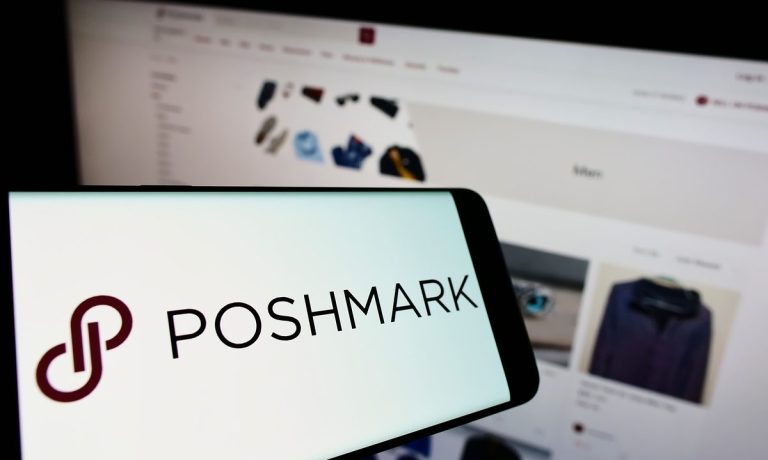
It was not the kind of birthday party that secondhand apparel platform Poshmark would have hoped for. After its soaring IPO debut 15 months ago, where its stock briefly raced above $100 per share, it has literally been all downhill for the reCommerce platform ever since.
Today, with its stock down 90% from the peak and its market value slipping below $1 billion, Poshmark itself is selling at clearance sale prices, and struggling to convince investors — who not long ago loved it — that its story is still intact.
But where the reseller from Redwood, California has failed to change the Wall Street narrative in its first year as a public company, a brand new incidental condition may have better luck.
“Inflation is a challenging thing that the American consumer and consumers around the world face,” Poshmark CEO Manish Chandra told analysts on the company’s Q4 earnings call Tuesday (Mar 22) afternoon, highlighting the reCommerce platform’s buy and sell features that allow users to both save money and earn it by cleaning out their closets.
“It is great for the planet and great for the wallet,” Chandra added. “Giving people the ability to sell and giving people the ability to shop will allow us to be a great partner to the consumer in these very inflationary times.”
While Chandra said the impact of inflation, and consumers’ reaction to it, is not fully factored into people’s decisions yet, they are emerging across the board in a shift that should bode well for value-oriented retailers.
Murky Short Term
Although Poshmark ended the year with better than expected Q4 revenue growth of 22% via 7.7 million active users, its lack of full-year guidance for 2022 combined with a conservative 7% sales growth forecast for Q1 unsettled investors who drove the stock down as much as 10% in after-hours trading.
By comparison, one year ago Poshmark saw its Q1 revenue grow 42%.
To be sure, it’s not just Poshmark that is having a hard time on Wall Street, as reCommerce rivals and peers including thredUP, The RealReal and 1stDibs have all fallen at least 70% during that same 15-month period.
While investors clearly have their doubts about this growing niche within the retail industry, Poshmark’s CEO said while competition has increased, the opportunity has grown even faster as more new customers than ever turn to, and try, resale marketplaces.
“We continue to lead the three trends shaping the future of shopping, the shift to online, the shift to social and the shift to secondhand,” Chandra said, while pointing to a 42% increase last quarter in customers searching for “Vintage” clothing.
At the same time, Chandra stressed, Poshmark and other secondhand social marketplaces are “defining a new, more human way to shop online” that is highly interactive, social, and even fun when discovery and price negotiation are involved.
To that point, Poshmark said its social interactions were up 47% in 2021 to more than 44.6 billion, a surge that Chandra said drives social engagement and a sense of community and connectivity.
“One thing that distinguishes Poshmark is that more than 80% of all purchases are preceded by social components such as a like, comment or offer,” Chandra said.
The challenge now is getting analysts and investors to feel the same way.